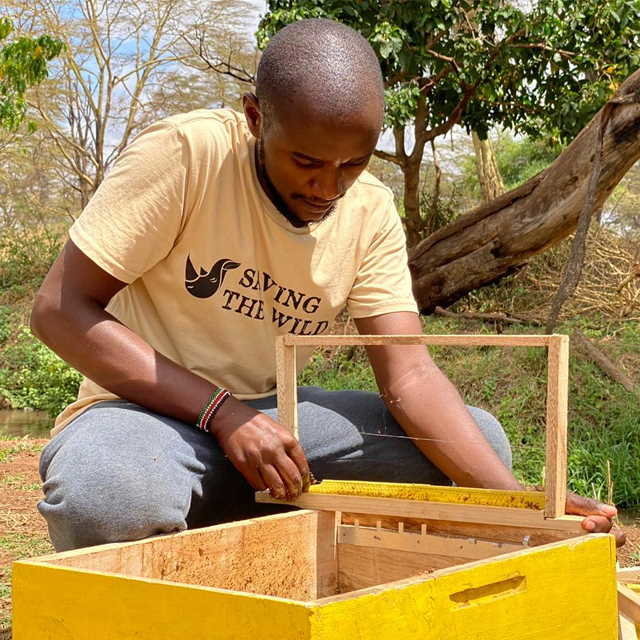Main image: James, a program educator for Kimana bee project, sets up a new hive box that will hang in the tree behind him. Sourced from Saving the Wild
With World Bee Day approaching on 20th May, we took a look at how African communities are working alongside bees to conserve biodiversity.
Increasingly under threat, bees are facing extinction at 100 to 1,000 times higher than normal due to human activities.
Nearly 90% of the world’s wild flowering plant species depend entirely, or at least in part, on animal pollination, along with more than 75% of the world’s food crops and 35% of global agricultural land. Not only do pollinators contribute directly to food security, but they are key to conserving biodiversity.
If this trend continues, nutritious crops, such as fruits, nuts and many vegetable crops will be substituted increasingly by staple crops like rice, corn and potatoes, eventually resulting in an imbalanced diet.
In an effort to curb this trend, Comvita, New Zealand’s largest producer of UMF Mānuka honey, last year announced a partnership with wildlife charity Saving the Wild, whereby the two organisations work together on global projects to help protect ‘nature in need’.
Saving the Wild and Comvita believe the key to protecting biodiversity is protecting the planet’s bee population. Via a joint education programme aptly named The Bee Keeping Project, the techniques of beekeeping will be introduced to the Maasai community in Tanzania, Africa. Comvita has donated 200 beehives to the region, supported by a three-year commitment to educating the unique skillsets required to manage these hives. Saving the Wild, based in Tanzania, is then translating that programme through exploratory practice with the local community.
The impact of the program is three-fold: bees will pollinate the native trees and flowers, while elephants will spread seeds as they walk, helping to regenerate new lands; concurrently, the communities tending the hives are trained in a new craft that can help revitalise the land, and economically it will provide a new income stream for the people. It’s a circular flow of benefits that bring harmony between the bees, the land and the people.

Comvita and Saving the Wild have worked together in the past to help nature in crisis. Firstly in 2018 in Africa when Saving the Wild used Comvita’s Manuka Honey to treat rhinos and elephants wounded by poachers. Again in 2020 when Saving the Wild founder Jamie Joseph took Comvita’s Manuka Honey Wound Gel to the frontline of the Australian bushfires, to help treat koalas and other native wildlife burned and injured while fleeing the fires. And most recently in collaboration with Saving the Wild’s Kenya partner Big Life Foundation, to support local communities living in the Kimana wildlife corridor by sharing knowledge of beekeeping and crafting of honey.
To find out more about how Comvita and Saving the Wild are working together to save bees, click here.





